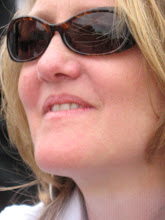 Today, I wish to remember the Twin Towers through their association with a certain French man whose reputation is the opposite of his name.
Today, I wish to remember the Twin Towers through their association with a certain French man whose reputation is the opposite of his name.On 7 August 1974, Philippe Petit, in the "artistic crime of the century", catapulted both himself and the WTC Twin Towers to world fame.
Flashback to the 1960s:
A rebellious teenager from Nemours, France, now expelled from his 5th and last school, runs away from home to become a magician. Quickly drawn to tightrope walking, he teaches himself everything that can be done on a rope in less than a year. He finds the tricks, however, lacking in any kind of expression or style. So he sets out to transform his new skills into an art form.
Fast forward to 1968:
Waiting for his turn in the dentist's chair, Petit picks up a magazine lying on the reception table. He reads about a project to build in New York the tallest structures the world had ever known. They will be called The World Trade Center Twin Towers.
From that point, Petit is obsessed with the WTC towers. For the next six years, he follows their construction, learning everything about them. He travels to New York on several occasions to photograph the buildings from a helicopter. He builds scale models and calculates how much the towers will sway in the wind. He sneaks into the buildings and hides out in them in order to understand their security systems. He makes false IDs for himself and his collaborators that identify them as part of the construction team. He poses as a journalist with a French architecture magazine and conducts fake interviews with roof workers. While there, he resolves how to rig a steel cable between the towers across a span of 43 meters (140 ft).
 On 6 August 1974, Petit and half the members of his 7-person team step off the freight elevator of Tower 1, nineteen steps away from the roof. They use a bow and arrow to shoot first fishing wire, then larger and larger ropes, to the team members on Tower 2. They make a make-shift bridge, over which they pass a 450-pound steel cable. They anchor and stabilize the cable with guy lines, securing it at various points about the rooftop structures.
On 6 August 1974, Petit and half the members of his 7-person team step off the freight elevator of Tower 1, nineteen steps away from the roof. They use a bow and arrow to shoot first fishing wire, then larger and larger ropes, to the team members on Tower 2. They make a make-shift bridge, over which they pass a 450-pound steel cable. They anchor and stabilize the cable with guy lines, securing it at various points about the rooftop structures.
The "coup", as Petit called it, began shortly after 7:15 the next morning. No one on the ground had yet noticed that the Twin Towers were joined 417 meters (1,368 ft) above the streets of Manhattan. Petit crossed without incident from the south Tower to its northern counterpart. Then he turned around and walked the wire back again. In all, he made the trip between the Towers 8 times. He sat on the wire; he did knee salutes on the wire; he even lay down on the wire at one point and reportedly chatted up a passing seagull.
Of course, Petit's artful crime was highly illegal and police officers were dispatched to the scene immediately. Sgt. Charles Daniels, had this to say about the spectacle:
I observed the tightrope 'dancer'—because you couldn't call him a 'walker'—approximately halfway between the two towers. And upon seeing us he started to smile and laugh and he started going into a dancing routine on the high wire....And when he got to the building we asked him to get off the high wire but instead he turned around and ran back out into the middle....He was bouncing up and down. His feet were actually leaving the wire and then he would resettle back on the wire again....Unbelievable really....[E]verybody was spellbound in the watching of it.
On his 8th trip between the WTC Towers, a light rain started to fall. Petit felt it best not to push his luck any further. He stepped off the wire on the south side, and fell right into police handcuffs.
But worldwide news coverage and public appreciation resulted in legal charges being dropped. Indeed, the owners of the Towers were so thrilled at the positive publicity that Petit's stunt brought to their then much-maligned towers that they offered him a lifetime pass to the WTC observation deck and requested that he sign a steel beam close to where he began the most dangerous tight-rope exploit the world had ever known.
A happy ending and a nice way to remember the once dominant feature of the New York City skyline.
Check out the major motion picture about the event, Man on Wire:
Image:
The World Trade Center Twin Towers by photographer Edgar de Evia, circa 1990, courtesy of Wikimedia Commons.
Quote:
"People & Events: Philippe Petit (1948-)" in Episode 8: The Center of the World of New York City: A Documentary Film broadcast on American Experience, Public Broadcasting Service in 2003.


No comments:
Post a Comment